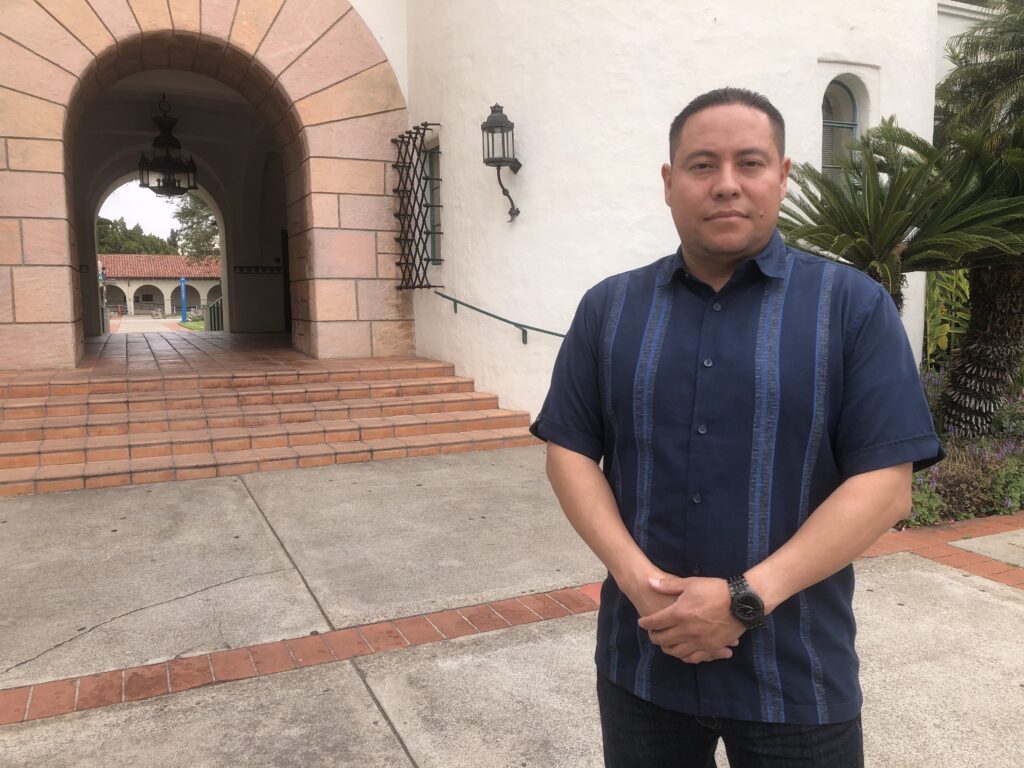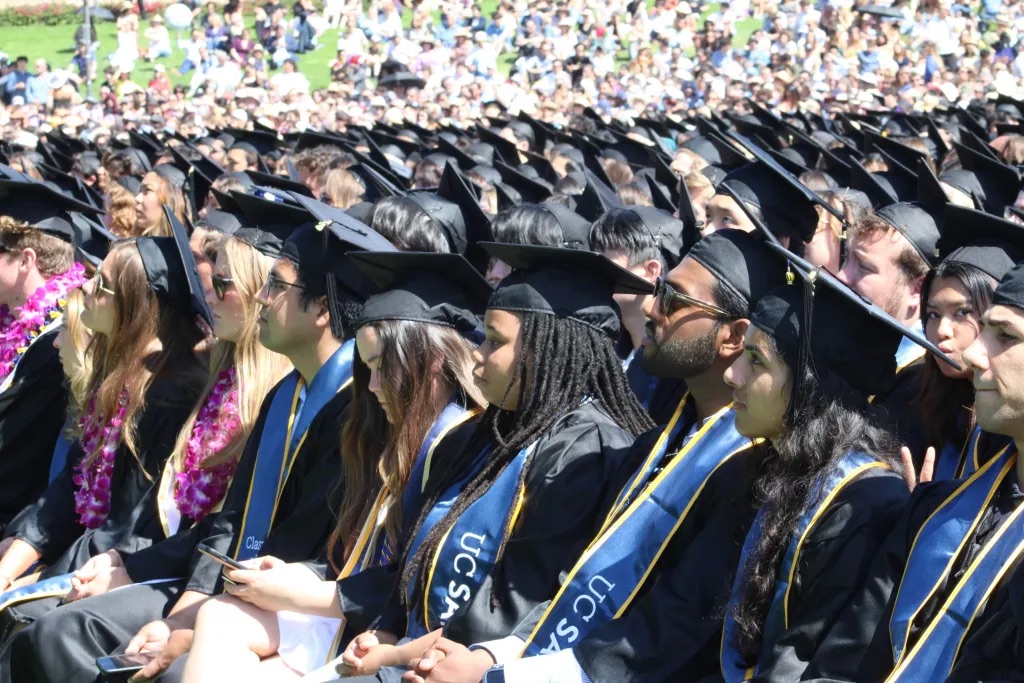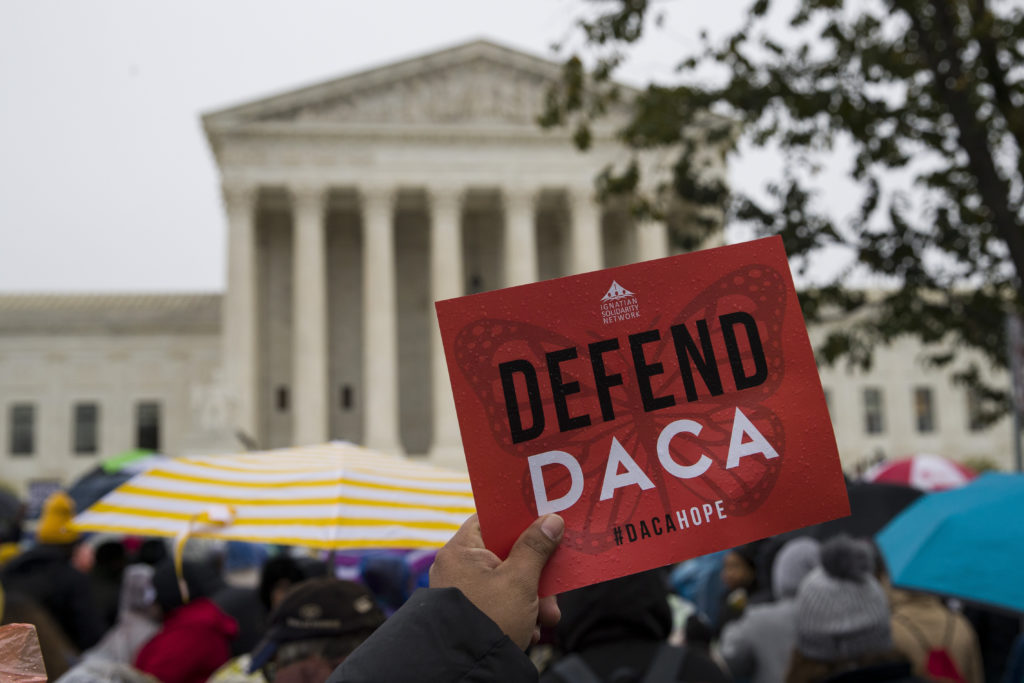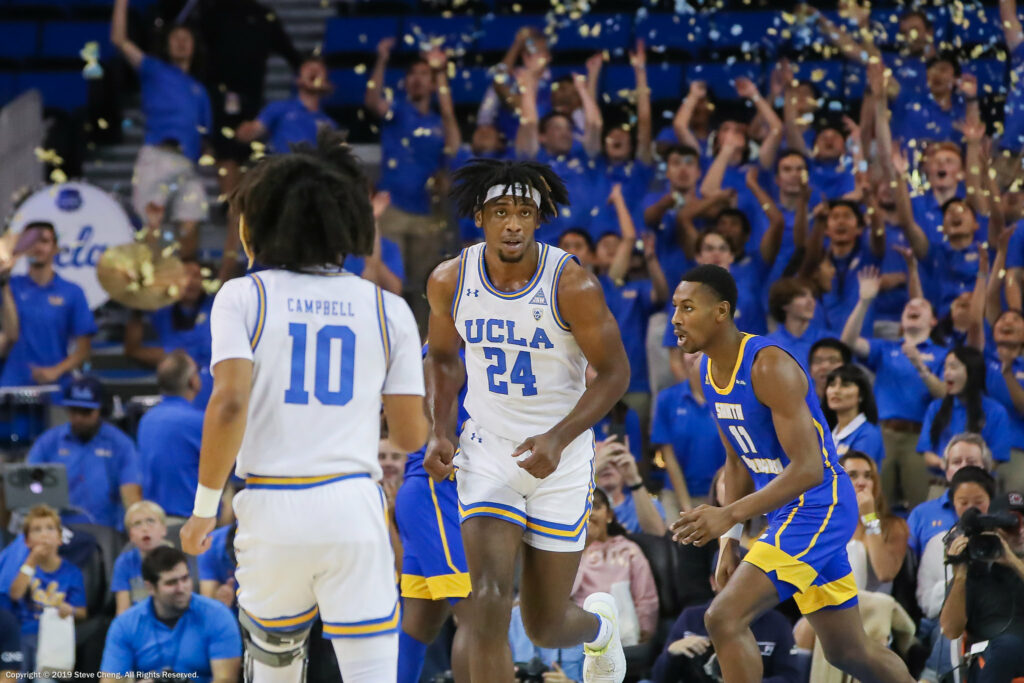
Noé C. Crespo, a professor of Health Promotion & Behavioral Science, poses outside the School of Public Health at San Diego State University.
EdSource
Noé Crespo, a professor of public health at San Diego State University, was on the verge of cracking a question he had spent years trying to answer.
In the midst of the Covid-19 pandemic, Crespo and his colleagues applied for a grant from the National Institutes of Health (NIH) to study ways to boost vaccination rates among Latinos. They designed a community outreach plan, paid a team to implement it, and collected results. All that remained this spring was to analyze their hard-earned data.
But in April, Crespo’s grant was terminated by the Trump administration as part of a controversial pullback on research funding in both the sciences and humanities nationwide.
Crespo has all the data he could want, but no money to pay a statistician to analyze it.
“We invest so much — time, energy, resources — to implement a project that is meant to help the public,” he said, “and so it does feel discouraging that we’re put in a position where we can’t continue that work.”
Around the country this spring, many faculty members who rely on federal funding for research have received similarly abrupt termination notices. The moment is particularly poignant for Crespo’s institution, San Diego State, which this year accomplished the long-awaited goal of joining a prestigious club of top-tier research universities known as R1s.
While a dip in federal support is unlikely to jeopardize that coveted recognition, it has disrupted research at San Diego State into subjects like mental health care and HIV/AIDS. The university’s research and development spending hit $158 million in the year ending June 2023, much of it fueled by federal dollars.
The cancellations are part of efforts under President Donald Trump to cut federal funding and align it more closely with the president’s political objectives. The White House has targeted grants related to a wide range of areas, from climate change to gender and sexuality. Critically for Crespo, Trump’s NIH has also axed research related to racial inequities in health, vaccine hesitancy and Covid.
California’s colleges and universities have much at stake when it comes to federal research funding. The state’s higher education institutions notched $7.2 billion in federal research and development (R&D) spending in 2023, according to the Higher Education Research and Development (HERD) Survey.
That figure includes more than $250 million spent at California State University campuses like San Diego State and more than $4.6 billion across the University of California system. The state’s private universities, including Stanford University and the University of Southern California, spent a combined $2.3 billion in federal R&D.
Fear of ‘losing a whole generation of scientists’
Putting an exact figure on grant cancellations nationwide has proven elusive, in part because the federal spending databases that track such spending sometimes contradict each other.
One recent analysis by researchers at Harvard, Yale and associated teaching hospitals estimated that $1.8 billion in NIH grants were terminated in a one-month period. Meanwhile, as selected grants get reinstated — and as attempts to block terminations advance through the courts — the number of canceled grants has become a moving target.
The impact on California could be substantial, even counting terminations at NIH alone. Grant Watch, a project tracking the cancellation of federal scientific research grants since Trump returned to office in 2025, estimates that California researchers have lost $273 million in NIH grants, counting funding that was not paid out because of terminations.
At San Diego State, Hala Madanat, the university’s vice president for research and innovation, estimates that the university typically receives about 70% of its research funding from the federal government, though that can vary from year to year. The university has so far identified 50 terminated federal grants with about $26 million remaining to be spent, she said, many of them related to climate change, LGBTQ communities and workforce pipeline programs.
“If we halt doctoral education because there’s no funding for three to four years, you are losing a whole generation of scientists,” Madanat said.
San Diego State has appealed virtually every grant termination, Madanat said. So far, none have been restored, though two subcontracts were reinstated outside the formal appeal process.
With appeals still pending, two federal grant recipients reached while reporting this story declined to comment, saying they are worried speaking out could endanger their chance of having funding reinstated. That potential risk is on Crespo’s mind, too.
“Do I have concerns? Yes,” he said. “At the same time, I was trained in public health to speak the truth, and that’s what scientists do.”

A ‘soul-crushing’ loss of federal funding
As Trump took office in January, San Diego State was capping off an ambitious campaign to become an R1, a distinction requiring it to spend at least $50 million on R&D and confer at least 70 doctoral research degrees.
The university saw research funding rise 64% in just three years. It conferred 123 doctoral degrees in 2022-23. And to cement its R1 bona fides, it plans to invest in a multiuse “innovation district” with technology and research facilities.
But funding for some of the university’s vaunted research projects is starting to vanish as the White House slashes selected grants and contracts.
In 2023, for example, the university celebrated the establishment of the SDSU Center for Community Energy and Environmental Justice. Equipped with $10 million in federal funding from the Environmental Protection Agency (EPA), San Diego State would guide historically underserved communities to apply for grants that could help them weather environmental threats like droughts and pollution.
“What we were doing was sort of the ‘teaching to fish,’” said Rebecca Lewison, a professor of biology at San Diego State who led the center, one of more than a dozen EPA Thriving Communities Technical Assistance Centers nationwide.
But then came some bad news. In February, EPA terminated the center’s funding, citing an obligation to ensure its grants do not support diversity, equity, and inclusion initiatives. The center is likely to lose an estimated $8 million it left unspent.
The funding reversal came as the White House has moved to roll back environmental justice-related initiatives. An EPA spokesperson said in an email that the San Diego State grant had given “radical [non-governmental organizations] millions of hard-earned taxpayer dollars” and that those groups were “forcing their agenda of wasteful DEI programs and ‘environmental justice’ preferencing on the EPA’s core mission of protecting human health and the environment.”
For Lewison, the loss of federal support for San Diego State’s center has been “soul-crushing.” She said such technical assistance is “really a bipartisan initiative” and that the EPA statement appears to misunderstand the nature of the center’s work.
“I appreciate that we were in the environmental justice sort of program umbrella and that that’s become a word that is associated with something negative,” Lewison said. “But honestly, ‘Thriving Communities’ is really what it sounds like: it’s wanting communities all over to thrive.”
Lewison is now exploring options to keep the center alive. San Diego State has set aside $1 million to sunset certain projects, Madanat said, and is also turning to private philanthropy.
‘I would love to know that answer’
At the time that Crespo filed a project summary for his vaccine grant, Covid had taken a dire toll on Latinos in California. UCLA researchers would later confirm that Latinos had experienced a disproportionate rate of Covid cases and deaths during the pandemic’s first year.
“If there’s a wildfire in a particular part of town, we would want to send the firefighters over there to put out that fire,” Crespo said. “And that’s what we do also in public health and in research: we identify where there are problems, and in some cases, there are subgroups of people that are disproportionately affected.”
NIH awarded Crespo and his colleagues a grant of $1.8 million in 2022, as highly transmissible subvariants of the Covid virus circulated. The team finally could put in motion the study they had planned at 10 San Diego-area health clinics.
There was still $314,690 remaining in the grant at the time it was canceled, according to data on grant terminations published by the U.S. Department of Health and Human Services. Without the ability to use those funds, the team will have to seek other ways to pay collaborators with data analysis expertise.
In the meantime, Crespo is left wondering: What worked and what didn’t?
“The data are there,” he said, “so I would love to know that answer.”







